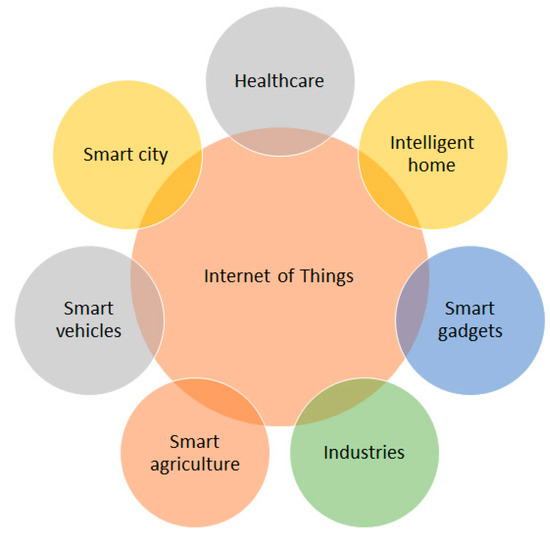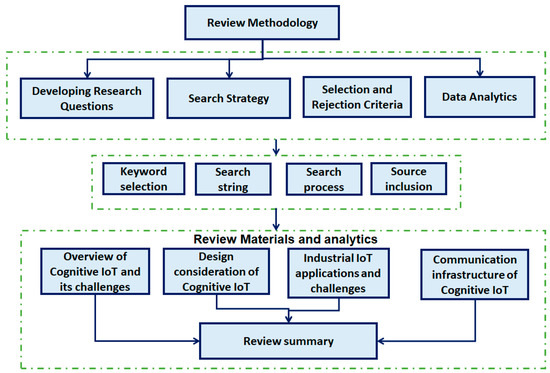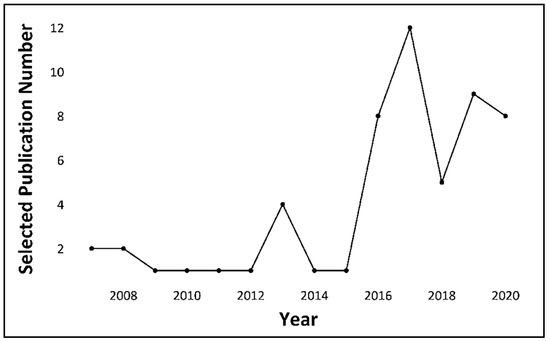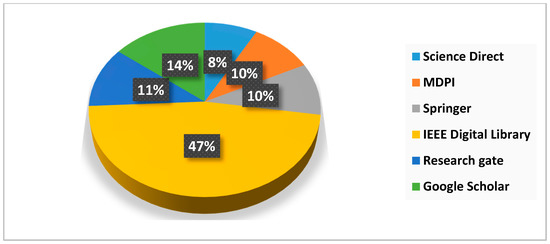1. Introduction
LPWAN provides long-distance communication for rural and urban areas to support IIoT devices considered by a 10-year provision time to acclimate IIoT applications with higher extensibility and availability of intelligent monitoring infrastructure for a small portion of data exchanges. LoRa is favorable to use with smart sensing applications working on the IIoT non-authored spectrum [
1]. NBIoT is suitable for supporting agriculture and environmental data collection and observations; industrial data tracking and monitoring; inventory tracking; smart billing; and smart buildings, smart metering, and smart cities. Machine-to-machine (M2M) communication uses the Bluetooth Low Energy (BLE) technique for data communication; the other IIoT applications used in healthcare, smart agriculture, intelligent home, smart vehicles, smart city, smart gadgets, and industries use the cognitive LPWAN, LoRA, Sigfox [
2,
3,
4,
5,
6,
7]. shows the various sectors of IIoT applications. There is a need to mix most LPWAN technologies in heterogeneous IIoT applications to provide more efficient and convenient intelligent services. In heterogeneous IIoT applications, there is a need to mix most LPWAN technologies to provide more efficient and convenient intelligent services. This will be deployed by cognitive LPWAN [
8].
Figure 1. Various sectors of IIoT applications.
Cognitive LPWAN will provide promising IIoT systems strategies and improve spectrum usage to increase network performance. The use of cognitive radio will help overcome the limitations due to several IIoT infrastructure things. Cognitive devices in LPWAN can work collaboratively more than available spectrum allocations. The LPWANs can share channels and events because of the extra traffic packets within the specific event area, thereby striving to block the channel concurrently [
9,
10,
11]. The most sophisticated Industrial Internet of Things (IIoT), based on applications for smart cities, industries, metering, and home architectures, are required to transmit data over long distances, consume low energy, and to be cheaper and highly scalable [
12,
13,
14]. However, the design mechanism requires maintaining the existing cellular communication technologies.
Thus, it has been a recent research prospect to meet-up all the above requisites related to IIoT-based applications, and due to the importance of the matter, newer and more suitable communication technologies such as Low Power Wide Area Network (LPWAN) started to appear with no delay. LPWAN is currently being utilized in numerous applications based on Industrial IoT (IIoT) due to their merits of offering low power consumption rates, long transmission range, low cost, simplified network topology, scalable and simple deployment, small data frame sizes [
14], and thin infrastructure; even though it has low data rates [
15]. According to the estimation provided in [
16], 800 million IIoT devices may become connected over LPWAN standards by 2022 due to the good qualities and advantages of LPWAN. However, there is a concern that most LPWAN will typically suffer from spectra congestion due to their major deployment in the unlicensed Industrial, Scientific, and Medical (ISM) band [
17]. This demerit may cause increased interference, limited scalability, spectral inefficiency, and reduced transmission range to LPWAN systems [
18].
As an aftermath, the necessity to mitigate the above limitations has encouraged the recent paradigm shift to integrate Cognitive Radio (CR) in LPWAN. The maturity of the study of CR has happened recently, intending to improve efficiency and spectral utilization in wireless communication systems; CR can automatically detect available channels in a wireless spectrum and alter its transmission parameters to ensure improved communication and radio operating behavior [
19]. CR has gained better consideration under new IEEE standards such as IEEE 802.15.2, IEEE 802.22, and IEEE Standards Coordinating Committee (SCC) due to the capability of CR to solve some problems related to wireless communications, e.g., interference, delayed network deployment, and spectral efficiency [
20,
21,
22,
23]. Moreover, CR has been utilized in many IIoT-based applications [
24], e.g., improving the Quality of Service (QoS) in Wireless Sensor Network (WSN)-based smart grid applications [
25]. Cognitive radio has also made its mark to mitigate interference in industrial WSNs (IWSNs) and fulfills the QoS requirement by improving the latency, transmission, and frame losses challenges [
26].
This analysis aims to research the literature on cognitive radio in LPWAN for industrial IoT. We investigate different studies providing different backgrounds for study and their relationships. The following research questions (RQ): RQ1: “How cognitive radio engage with the industrial IoT?”, RQ2: “What are the Proposed architectures that Support Cognitive Radio LPWAN based IIOT?”, and RQ3: What key success factors need to comply for reliable CIIoT support in the industry?”.
2. Materials and Methods
This study considers the systematic review technique a suitable approach to address particular research questions by applying the several phases that can be categorized into three parts—preparation, leading, and reporting the review. presents the overall review methodology for cognitive-enabled IIoT methods for different industrial applications. The data/paper selection methodology for the year and the source is illustrated in and .
Figure 2. Review methodology.
Figure 3. Selected publication over the years (2007–2020).
Figure 4. Sources of publication that have been considered for review.
This study’s review methodology focused on the existing approaches, techniques, and design principles of industrial IIoT applications in LPWAN. All the relevant data (journals and conferences within 2007–2020) were collected and arranged during the first phase (preparation phase): the background and formulated research questions RQ1, RQ2, and RQ3.
3. Conclusions and Future Work
The IIoT helps several applications that require power control and low cost to achieve long life. The development of the IIoT communication technologies base on CR has achieved high ability for industrial network stable connectivity. An efficient and appropriate smart service in smart cities, i.e., advanced health care, automatic driving, and users, can currently easily access such IIoT. This paper focuses on smart wireless technologies based on cognitive radio wireless medium with low power wide area LPWAN unlicensed spectrum using LoRa, Sigfox, LTE-M, and NBIoT. Various cognitive IIoT applications have been studied, with their techniques, protocols, and the model success determinant parameters with their significance being identified. Cognitive LPWAN allows smart city services to access other wireless access points and selects appropriate communication technologies to achieve the best user experience. Our future study for the research area is to develop a framework that facilitates less energy, long-run devices, and the highest possible data rate using the cognitive Internet of Things for the industrial solution.




